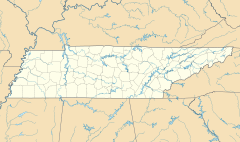
Vanderbilt University is a private research university in Nashville, Tennessee. Founded in 1873, it was named in honor of shipping and rail magnate Cornelius Vanderbilt, who provided the school its initial $1-million endowment in the hopes that his gift and the greater work of the university would help to heal the sectional wounds inflicted by the Civil War.
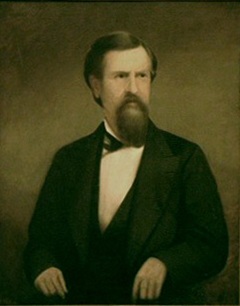
James Davis Porter was an American attorney, politician, educator, and officer of the Confederate Army. He served as the 20th Governor of Tennessee from 1875 to 1879. He was subsequently appointed as Assistant Secretary of State during President Grover Cleveland's first administration, and Minister to Chile in Cleveland's second administration.

Peabody College of Education and Human Development is the education school of Vanderbilt University, a private research university in Nashville, Tennessee. The school offers undergraduate, master's, and doctoral degrees. Peabody College's faculty are organized across five departments, and include researchers in education, psychology, public policy, human development, special education, educational leadership, and organizational development. Peabody has a long history as an independent institution before becoming part of Vanderbilt University in 1979. The college was ranked fifth among graduate schools of education in the United States in the 2023 rankings by U.S. News & World Report.
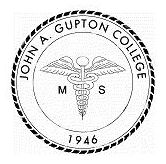
John A. Gupton College is a private 2-year college in Nashville, Tennessee that specializes in mortuary science. Founded in 1946, it awards the Associate of Arts degree in Funeral Service. Gupton College is accredited by both the Commission on Colleges of the Southern Association of Colleges and Schools and the American Board of Funeral Service Education. Gupton is located just west of downtown Nashville, in the same building as the Tennessee Funeral Directors Associational Office.
University of Nashville was a private university in Nashville, Tennessee. It was established in 1826 as Cumberland College. It existed as a distinct entity until 1909; operating at various times a medical school, a four-year military college, a literary arts college, and a boys preparatory school. Educational institutions in operation today that can trace their roots to the University of Nashville include Montgomery Bell Academy, an all-male preparatory school; the Vanderbilt University Medical School; Peabody College at Vanderbilt University; and the University School of Nashville, a co-educational preparatory school.

Jeffersonian architecture is an American form of Neo-Classicism and/or Neo-Palladianism embodied in the architectural designs of U.S. President and polymath Thomas Jefferson, after whom it is named. These include his home (Monticello), his retreat ,the university he founded, and his designs for the homes of friends and political allies. More than a dozen private homes bearing his personal stamp still stand today. Jefferson's style was popular in the early American period at about the same time that the more mainstream Greek Revival architecture was also coming into vogue (1790s–1830s) with his assistance.
The Western Military Institute was a preparatory school and college located first in Kentucky, then in Tennessee. It was founded in 1847 in Georgetown, Kentucky, and it later moved to Nashville, Tennessee, where it merged with Montgomery Bell Academy in 1867. The former campus is now Vanderbilt University's Peabody College. Alumni include prominent Confederate veterans and Southern politicians.
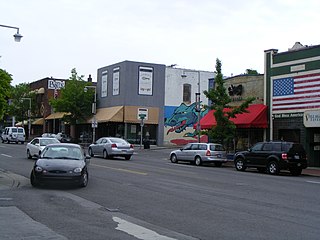
Hillsboro Village is a neighborhood of Nashville, Tennessee, located 3 miles southwest of downtown.

John Berrien Lindsley (1822–1897) was an American Presbyterian minister and educator in Nashville, Tennessee.

The Blair School of Music, located in Nashville, Tennessee, provides a conservatory-caliber undergraduate education in music performance, composition, or integrated music studies within the context of a major research university, Vanderbilt University. Blair also provides music lessons, classes and ensembles to over 800 precollege and adult students each semester. Blair is the youngest and smallest of Vanderbilt's ten constituent schools and colleges.

Belmont Mansion, also known as Acklen Hall, and originally known as Belle Monte, Belle Mont or Belmont, is a historic mansion located in Nashville, Tennessee. It was built by Joseph and Adelicia Acklen to serve as the center of their 180-acre summer estate in what was then country outside the city, and featured elaborate gardens and a zoo. They lived much of the rest of the year on her plantations in Louisiana.

Roger Williams University in Nashville, Tennessee was a historically black college. It was founded in 1866 as the Nashville Normal and Theological Institute by the American Baptist denomination, which established numerous schools and colleges in the South. Renamed for Roger Williams, the founder of the First Baptist Church in America, it became the largest Baptist college in the area for educating African Americans. It was founded in a period when Protestant mission groups sponsored numerous educational facilities for freedmen in the South.
Henry C. Hibbs (1882–1949) was an American architect. He designed many buildings on the campus of Vanderbilt University in Nashville, Tennessee as well as Davidson College in Davidson, North Carolina. He also designed the libraries of Fisk University in Nashville and the University of Tulsa in Tulsa, Oklahoma. He was the recipient of several awards for his architectural work.

The Frank W. Mayborn Building houses the Human and Organizational Development program at Vanderbilt University in Nashville, Tennessee.
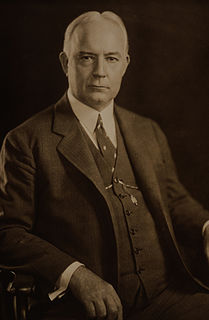
Bruce Ryburn Payne (1874-1937) was an American educator. He was the founding president of Peabody College from 1911 to 1937.
Sidney Clarence Garrison (1885–1945) was an American educator and psychologist. He served as the second President of Peabody College from 1938 to 1945. He was the (co-)author of several books about education.

Lindsley Hall is a historic building in Nashville, Tennessee. Built in the antebellum South as the main building of the University of Nashville, it served as a Union hospital during the Civil War. It became the Nashville Children's Museum in 1945. In 1974 the museum moved to a new facility at 800 Fort Negley Boulevard, became the Cumberland Science Museum and is now known as the Adventure Science Center. The building is once again called Lindsley Hall and is used by the City of Nashville for Metro Government offices.

Memorial Hall is a historic building on the Peabody College campus of Vanderbilt University in Nashville, Tennessee. It was built in 1935 as a dormitory hall for female descendants of Confederate States Army veterans. Its former name resulted in multiple lawsuits and student unrest. In August 2016, Vanderbilt announced it would reimburse the United Daughters of the Confederacy for their financial contribution and remove the word Confederate from the building.
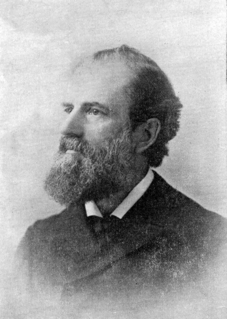
William Harold Payne (1836–1907) was an American educator and translator. As professor of the Science and Art of Teaching at the University of Michigan in 1879, he was the first university professor of pedagogy in the United States. He served as the chancellor of the University of Nashville and the president of Peabody College from 1887 to 1901.
Edwin Augustus Keeble was an American architect who was trained in the Beaux-Arts architecture tradition. He designed many buildings in Tennessee, including homes, churches, military installations, skyscrapers, hospitals and school buildings, some of which are listed on the National Register of Historic Places. He is best known for Nashville's landmark Life and Casualty Tower built in 1957 which was the tallest commercial structure in the Southeastern United States at that time. It reflected an architectural turn to modernism and was one of the first buildings emphasizing energy efficiency.

